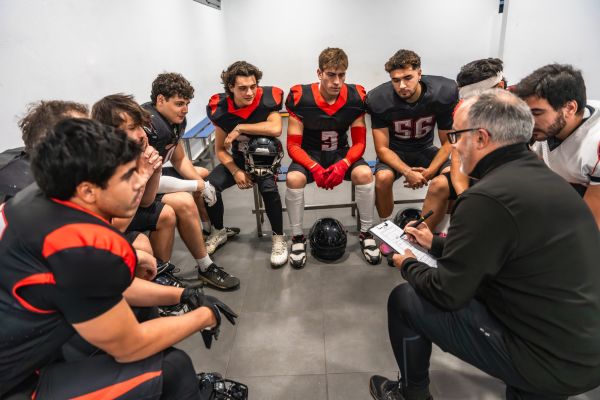Athletic Scholarship Requirements: A Comprehensive Guide for Aspiring Student-Athletes
So, you’re dreaming of playing sports at the collegiate level, huh? Well, if you’re hoping to score an athletic scholarship, you’re not alone. Thousands of students across the country are vying for the same opportunity. But, don’t sweat it—knowing the ins and outs of athletic scholarship requirements can give you the edge you need to make that dream a reality. In this guide, we’ll break down everything you need to know, from academic standards to the athletic benchmarks that colleges look for. Let’s dive in!
What Are Athletic Scholarships?
Before we jump into the nitty-gritty of the requirements, let’s clarify what an athletic scholarship is. An athletic scholarship is financial aid awarded to students based on their athletic abilities and potential to contribute to a college or university’s sports team. These scholarships can cover tuition, fees, room and board, and even books, depending on the level of scholarship awarded. Sounds awesome, right? But getting one isn’t as easy as just being good at your sport.
Academic Requirements: Hitting the Books Before Hitting the Field
While your athletic prowess is crucial, don’t forget that you’re a student-athlete. Emphasis on “student.” Academic requirements are often the first hurdle you’ll need to clear to be considered for an athletic scholarship.
- GPA: Most colleges and universities require a minimum GPA for scholarship eligibility. The NCAA, for instance, requires Division I athletes to have a minimum GPA of 2.3 in core courses. However, this is the bare minimum—aim higher to stand out!
- Standardized Test Scores: SAT and ACT scores also play a significant role. NCAA Division I schools typically look for an SAT score of around 900 or an ACT sum score of 75. Again, these are just the minimums—better scores could mean more scholarship opportunities.
- Core Courses: You’ll need to complete a certain number of core courses during high school, including English, math, science, and social studies. The NCAA requires 16 core courses for Division I athletes.
Athletic Requirements: Showcasing Your Skills
Now, let’s get to the part you’ve been waiting for—the athletic requirements. Colleges aren’t just looking for good athletes; they want great ones who will bring success to their teams. Here’s what you need to know:
- Performance Statistics: Coaches will closely evaluate your stats—goals scored, points earned, or times achieved. For example, a basketball player’s average points per game or a swimmer’s fastest times can be crucial.
- Scouting Reports: College coaches often rely on scouting reports from high school coaches, club coaches, or recruiting services. These reports can significantly influence your scholarship prospects.
- Highlight Reels: A well-crafted highlight reel showcasing your best moments can be a game-changer. Make sure it’s high-quality and easy to share.
- Competitions and Tournaments: Participating in high-level competitions or tournaments can boost your visibility. The more competitive the event, the better.
Physical Requirements: Staying Fit and Healthy
Athletic scholarships aren’t just awarded based on skill alone; physical fitness and health are also key. Schools want athletes who can handle the rigorous demands of college sports.
- Physical Fitness Tests: Some colleges may require you to pass physical fitness tests. These tests could include sprints, endurance runs, strength exercises, and agility drills.
- Injury History: A clean bill of health is ideal. Frequent injuries or a history of serious injuries might make coaches think twice. Stay fit, and if you’ve had injuries, make sure you’re fully recovered before trying out.
The Recruitment Process: Getting Noticed by College Coaches
It’s not enough to be a great student-athlete—you need to get noticed by the right people. Here’s how you can increase your chances of landing that scholarship.
- Start Early: The recruitment process can start as early as your sophomore year of high school. Get on coaches’ radars by attending camps, showcases, and tournaments.
- Create a Sports Resume: Include your stats, achievements, GPA, test scores, and contact information for your coaches. A well-rounded resume can catch a coach’s eye.
- Communicate: Don’t be shy—reach out to college coaches. Send them your resume, highlight reel, and a well-written cover letter. Keep in touch regularly, updating them on your progress.
- Official Visits: If a coach invites you for an official visit, that’s a great sign. This visit allows you to experience the campus, meet the team, and discuss scholarship opportunities.
The Role of the NCAA and NAIA
Understanding the organizations that govern college athletics is crucial. The NCAA (National Collegiate Athletic Association) and NAIA (National Association of Intercollegiate Athletics) have different requirements and regulations.
- NCAA Eligibility Center: To compete in NCAA sports, you must register with the NCAA Eligibility Center. They’ll verify your academic and amateur status. Make sure all your documents are in order.
- NAIA Eligibility Center: Similar to the NCAA, the NAIA has its eligibility center. The NAIA is generally considered less competitive, but it still offers substantial scholarship opportunities.
FAQs About Athletic Scholarship Requirements
Q1: Can I still get a scholarship if I don’t meet the minimum academic requirements?
- It’s tough but not impossible. Some schools offer academic support to help you meet the requirements, but it’s better to focus on improving your grades before applying.
Q2: Do all sports offer athletic scholarships?
- Not all sports offer scholarships at every school. Sports like football, basketball, and track and field typically have more scholarship opportunities, but it varies by institution.
Q3: How important are extracurricular activities in getting an athletic scholarship?
- While your athletic and academic performance are paramount, extracurricular activities can showcase your leadership and time management skills, which are appealing to coaches.
Q4: Can international students receive athletic scholarships?
- Yes, international students can receive athletic scholarships, but the process may differ slightly. It’s essential to understand the specific requirements for international applicants.
Q5: What happens if I get injured after receiving a scholarship?
- It depends on the severity of the injury and the school’s policy. Some schools may continue to honor your scholarship, while others may not.
Summary: Wrapping It Up
Getting an athletic scholarship is no walk in the park. It requires a combination of academic excellence, athletic prowess, and strategic planning. Start early, stay focused, and make sure you’re meeting both the academic and athletic requirements. Remember, the recruitment process is competitive, so take every opportunity to showcase your talents. With determination and the right approach, you can secure an athletic scholarship and take your game to the next level.
Authoritative Links
- NCAA Eligibility Center: https://web3.ncaa.org/ecwr3/
- NAIA Eligibility Center: https://www.playnaia.org/eligibility-center
- College Board (SAT): https://www.collegeboard.org/
- ACT: https://www.act.org/
This comprehensive guide should help you navigate the complex world of athletic scholarship requirements and give you a solid foundation to build your athletic and academic future.



